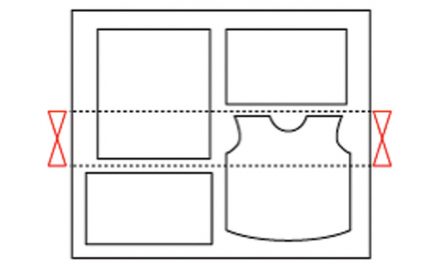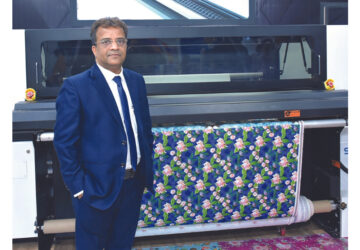In the era of cut-throat competition, all the organisations are struggling to survive without the red marks on their ledgers. Every fabric house as on date is working towards a system where they can have complete control of the fabric, enabling reduction in the fabric purchases per order delivered, and in turn saving money from the beginning of the process. Especially, the wastages occurring in cutting room cut majorly into the potential saving areas of any organisation, unless workedupon properly. Although, having good markers and cutting systems essential, it also has to make sure that fabric is utilised to the maximum.
Profit lines of the fabric products get affected by a plethorea of reasons including but not limited to width control, cut planning, fabric requisitions, binding requirements and laying up. Measuring the product properly from selvedge to selvedge, calculating fabric requirements for the lay through marker lengths, anticipated waste (end of rolls) and variable allowance as per the fabric type are the major components which help in analysing the marked fabric consumption per garment.
Pro-cut, a system designed and developed by Methods Apparel Consultancy with experiences off many years, helps monitor every unit of fabric issued. It helps establish efficiencies of all sections of the factory including: Factory Efficiency, line, and Operator efficiencies and to encourage the facility to Build Quality into garments. Sunaina Khanna, Director of Methods Apparel Consultancy, explains how Pro-Cut system adds value to the entire fabric cutting room and makes the entire process efficient. Given are some excerpts of the conversation:
How does Pro-cut help in increased fabric savings in the cutting room?
Pro-cut has been purposely designed to save fabric and it helps save 5 per cent of fabric. Taking the help of collective experiences earned within over 20 years, the system has been developed to monitor issued fabric. It also helps in creating management reports enabling total control of the cutting process.
What is the extent of profits achieved through fabric savings?
Although there is an array of unavoidable areas for losing the fabric including fabric joint losses, stitch area losses, but with the help of the system, the remainder fabric can come in ratio of all sizes allowing the user to prepare combinations of sizes for using end-bits without any assistance from other departments. A number of alternatives of cut order plans can be made using the software.
Inefficient cut order planning and poor markers usually lead to fabric loss of upto 7.5 per cent. Employing efficient markers for a given set of quantities can help make cutting rooms 10 per cent to 15 per cent more productive and save about 2 per cent of fabric issued. It lead to the augmented profitability of the organisation overall, since fabric as a component makes upto 70 per cent of the cost of the product alone. A lot of fabric being lost to stickering and because of cutting edges can also be saved with the help of a smart cutting process.
How can cutting of the fabric be organised as per the requirement and orders of the customer to make the most of the fabric?
Usually, while placing the order for the fabric, an additional of 5 per cent is ordered. While, it is allowed from the buyer’s end, the amount for the extra fabric is usually added to purchases. When the fabric is sent to the cutting room, about 17 per cent of the fabric is usually lost to cutting wastage, and shrinkage. This includes the extra order amounting to 5 per cent of the entire fabric. At this stage, having a system like Pro-cut helps the organisation save a good proportion out of the fabric being wasted due to poor cut-planning. We have successfully saved upto 5 per cent of fabric with an average of 3.6 per cent per order.
How is “cut order planning” revolutionising the cutting rooms of fabric industry?
Dealing with the costliest element of the entire value chain of a garment, there are a lot of dos and don’ts to be followed in order to be able to save each and every possibly save-able inch of the fabric. On the contours of end-bits, labour reduction, quantity per size / colour, marker length, fabric width and shrinkages, Pro-Cut helps produce all the garments in the order to get the best possible fabric utilisation enhancing the overall organisational profitability while minimising the amount of labour required.
Can you explain us the management tools built in software programme?
A) For any process to be improved, it needs to be measured, and managed well to yield the desired result. Thanks to Pro Cut smart dash board, on daily basis it sends the profitability of the order at fabric level to the senior management for review. We have seen clients managing it well to improve the fabric utilisation. Also it helps to monitor the performance of the vendor on their fabric supply.
The system can produce a Cut Order plan which optimises fabric utilisation, maximises cutting room output and produces a list of markers at the best possible ply height while allowing user to plan the remainder of end bits to complete the planning process. Since CAD systems now have the facility to make markers automatically it is also possible to make the markers of the chosen list, establish which marker is most efficient and re-plan the whole order maximising the use of the most efficient markers.


















